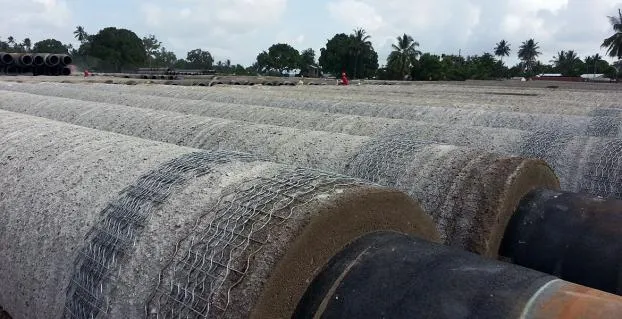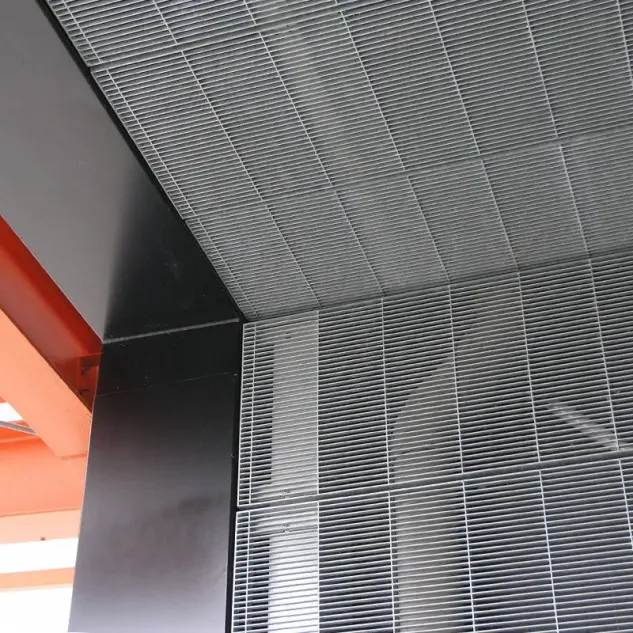- Industrial zone, South of Anping Town, Hengshui, Hebei, China.
- sales@hfpetromesh.com
- +86-18931809706
 Afrikaans
Afrikaans  Albanian
Albanian  Amharic
Amharic  Arabic
Arabic  Armenian
Armenian  Azerbaijani
Azerbaijani  Basque
Basque  Belarusian
Belarusian  Bengali
Bengali  Bosnian
Bosnian  Bulgarian
Bulgarian  Catalan
Catalan  Cebuano
Cebuano  Corsican
Corsican  Croatian
Croatian  Czech
Czech  Danish
Danish  Dutch
Dutch  English
English  Esperanto
Esperanto  Estonian
Estonian  Finnish
Finnish  French
French  Frisian
Frisian  Galician
Galician  Georgian
Georgian  German
German  Greek
Greek  Gujarati
Gujarati  Haitian Creole
Haitian Creole  hausa
hausa  hawaiian
hawaiian  Hebrew
Hebrew  Hindi
Hindi  Miao
Miao  Hungarian
Hungarian  Icelandic
Icelandic  igbo
igbo  Indonesian
Indonesian  irish
irish  Italian
Italian  Japanese
Japanese  Javanese
Javanese  Kannada
Kannada  kazakh
kazakh  Khmer
Khmer  Rwandese
Rwandese  Korean
Korean  Kurdish
Kurdish  Kyrgyz
Kyrgyz  Lao
Lao  Latin
Latin  Latvian
Latvian  Lithuanian
Lithuanian  Luxembourgish
Luxembourgish  Macedonian
Macedonian  Malgashi
Malgashi  Malay
Malay  Malayalam
Malayalam  Maltese
Maltese  Maori
Maori  Marathi
Marathi  Mongolian
Mongolian  Myanmar
Myanmar  Nepali
Nepali  Norwegian
Norwegian  Norwegian
Norwegian  Occitan
Occitan  Pashto
Pashto  Persian
Persian  Polish
Polish  Portuguese
Portuguese  Punjabi
Punjabi  Romanian
Romanian  Russian
Russian  Samoan
Samoan  Scottish Gaelic
Scottish Gaelic  Serbian
Serbian  Sesotho
Sesotho  Shona
Shona  Sindhi
Sindhi  Sinhala
Sinhala  Slovak
Slovak  Slovenian
Slovenian  Somali
Somali  Spanish
Spanish  Sundanese
Sundanese  Swahili
Swahili  Swedish
Swedish  Tagalog
Tagalog  Tajik
Tajik  Tamil
Tamil  Tatar
Tatar  Telugu
Telugu  Thai
Thai  Turkish
Turkish  Turkmen
Turkmen  Ukrainian
Ukrainian  Urdu
Urdu  Uighur
Uighur  Uzbek
Uzbek  Vietnamese
Vietnamese  Welsh
Welsh  Bantu
Bantu  Yiddish
Yiddish  Yoruba
Yoruba  Zulu
Zulu
- Afrikaans
- Albanian
- Amharic
- Arabic
- Armenian
- Azerbaijani
- Basque
- Belarusian
- Bengali
- Bosnian
- Bulgarian
- Catalan
- Cebuano
- Corsican
- Croatian
- Czech
- Danish
- Dutch
- English
- Esperanto
- Estonian
- Finnish
- French
- Frisian
- Galician
- Georgian
- German
- Greek
- Gujarati
- Haitian Creole
- hausa
- hawaiian
- Hebrew
- Hindi
- Miao
- Hungarian
- Icelandic
- igbo
- Indonesian
- irish
- Italian
- Japanese
- Javanese
- Kannada
- kazakh
- Khmer
- Rwandese
- Korean
- Kurdish
- Kyrgyz
- Lao
- Latin
- Latvian
- Lithuanian
- Luxembourgish
- Macedonian
- Malgashi
- Malay
- Malayalam
- Maltese
- Maori
- Marathi
- Mongolian
- Myanmar
- Nepali
- Norwegian
- Norwegian
- Occitan
- Pashto
- Persian
- Polish
- Portuguese
- Punjabi
- Romanian
- Russian
- Samoan
- Scottish Gaelic
- Serbian
- Sesotho
- Shona
- Sindhi
- Sinhala
- Slovak
- Slovenian
- Somali
- Spanish
- Sundanese
- Swahili
- Swedish
- Tagalog
- Tajik
- Tamil
- Tatar
- Telugu
- Thai
- Turkish
- Turkmen
- Ukrainian
- Urdu
- Uighur
- Uzbek
- Vietnamese
- Welsh
- Bantu
- Yiddish
- Yoruba
- Zulu
Feb . 16, 2025 06:14
Back to list
heel proof trench drain grates
As a landowner or urban planner, effectively managing water drainage is a critical aspect of your property maintenance plan. Heel-proof trench drain grates have emerged as an essential component in both residential and commercial landscaping, offering functionality, safety, and aesthetic appeal. This article explores the nuances of selecting and utilizing heel-proof trench drain grates, providing insights into their installation, material selection, and benefits to ensure an informed choice.
Authoritativeness in product selection is seen in the adherence to relevant industry standards and certifications. Ensuring that the chosen heel-proof trench grates comply with standards such as ASTM or EN means they have been rigorously tested for performance in real-world conditions. This certification not only assures quality and safety but also establishes the grates’ capability to withstand various environmental and operational stressors. With respect to experience, users of heel-proof trench drain grates often emphasize the improved pedestrian safety and reduced liability risks. In locations where traditional drainage covers have led to incidents of tripping or injury, the adoption of heel-proof designs has markedly decreased such occurrences. Facility managers report a significant reduction in accident claims and increased confidence in the site’s safety provisions. Furthermore, users appreciate the low-maintenance nature of these grates, as modern designs incorporate debris-filtering capabilities that minimize the need for frequent clean-ups. Trustworthiness is further cemented by opting for products from reputable manufacturers known for their commitment to quality and customer service. Engaging with manufacturers that offer warranties and comprehensive post-sales support provides an additional layer of security and reliability. Moreover, sourcing from companies that focus on sustainable manufacturing practices aligns with the increasing demand for environmentally conscious solutions in urban development. In conclusion, heel-proof trench drain grates represent a convergence of safety, functionality, and sustainability in drainage design. Their application across diverse settings not only meets necessary safety standards but also enhances the overall usability and aesthetics of public and private spaces. By carefully considering material selection, compliance with industry standards, and professional installation, property managers and urban planners can ensure these systems operate effectively, safeguarding both the environment and human activity.


Authoritativeness in product selection is seen in the adherence to relevant industry standards and certifications. Ensuring that the chosen heel-proof trench grates comply with standards such as ASTM or EN means they have been rigorously tested for performance in real-world conditions. This certification not only assures quality and safety but also establishes the grates’ capability to withstand various environmental and operational stressors. With respect to experience, users of heel-proof trench drain grates often emphasize the improved pedestrian safety and reduced liability risks. In locations where traditional drainage covers have led to incidents of tripping or injury, the adoption of heel-proof designs has markedly decreased such occurrences. Facility managers report a significant reduction in accident claims and increased confidence in the site’s safety provisions. Furthermore, users appreciate the low-maintenance nature of these grates, as modern designs incorporate debris-filtering capabilities that minimize the need for frequent clean-ups. Trustworthiness is further cemented by opting for products from reputable manufacturers known for their commitment to quality and customer service. Engaging with manufacturers that offer warranties and comprehensive post-sales support provides an additional layer of security and reliability. Moreover, sourcing from companies that focus on sustainable manufacturing practices aligns with the increasing demand for environmentally conscious solutions in urban development. In conclusion, heel-proof trench drain grates represent a convergence of safety, functionality, and sustainability in drainage design. Their application across diverse settings not only meets necessary safety standards but also enhances the overall usability and aesthetics of public and private spaces. By carefully considering material selection, compliance with industry standards, and professional installation, property managers and urban planners can ensure these systems operate effectively, safeguarding both the environment and human activity.
Share
Latest news
-
Welded Steel Bar Grating: The Rugged Industrial Flooring Solution Built for Load and LongevityNewsJun.24,2025
-
Steel Walkway Grating: Reliable, Resilient, and Built for Every StepNewsJun.24,2025
-
Shale Shaker Screen for Sale: Optimize Drilling Efficiency with Precision Screening PowerNewsJun.24,2025
-
Shaker Screen for Sale: Elevate Your Drilling Efficiency with Durable Separation SolutionsNewsJun.24,2025
-
Press Locked Steel Grating: Industrial Strength with Precision Fit for Heavy-Duty ApplicationsNewsJun.24,2025
-
Perimeter Safety Netting: The Critical Safety Upgrade for Every HelipadNewsJun.24,2025